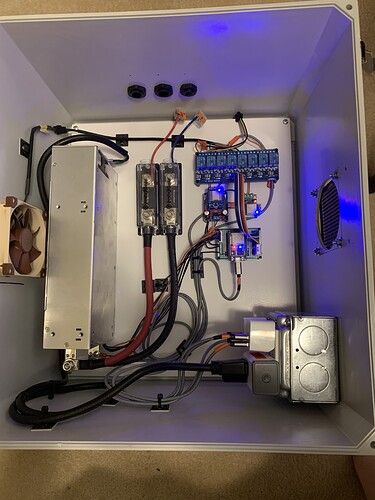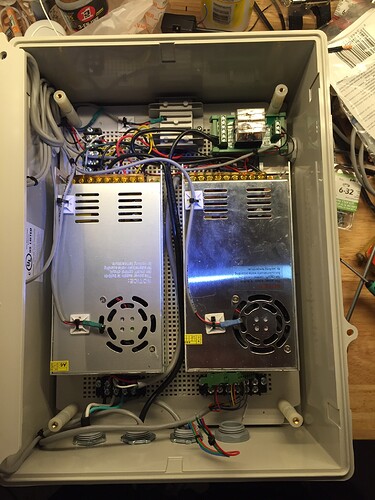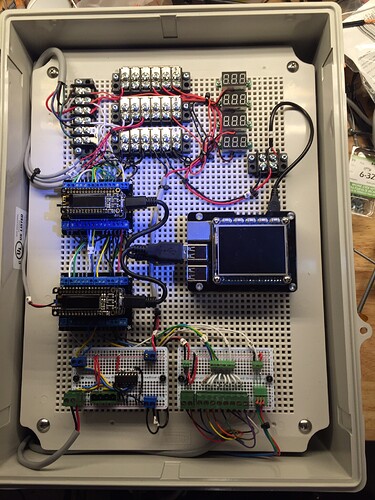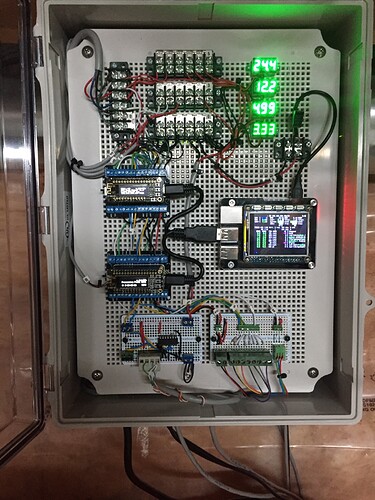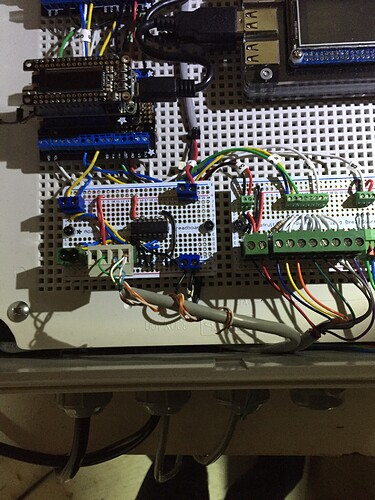Hi there,
I am using a PixelBlaze to drive about 1000 SK9822 pixels (100ft/30m of strips) for a deck lighting project. The 5Vdc power cables have been run already for power injection. The PixelBlaze is about 60-70ft (20m) away from the first pixel. I know it should be closer, but I put the PB in the same enclosure as the 5Vdc power supply, and given the layout of my garage, I was limited to where I could put it.
I bought a spool of 100ft (30m) of 18AWG stranded hookup wire for the data and clock signals. In my house, I tested the setup and was able to perfectly drive a single 5m strip with the 100ft of data/clock wire still on the spool. Great! So I unspooled the wire to install outside, and it doesn’t work. I’m guessing the wire being on a spool did some black magic stuff that mitigated any interference/capacitance issues that enabled PB to work.
I know I’m pushing the limits of things, but what kind of cable would be best for me to use to try to get this to work? I’m guessing some sort of shielded twisted pair would be best, maybe a Cat6/7 cable? If I try this out, what’s the best way to use the pairs to best help the data and clock signals get from the PB to the LED strip to minimize interference?
I’m thinking of using two pairs, one for the signal and one for the clock. Connect data and clock to a solid color (blue/green) of a pair, and then connect the second pair wire (white) and drain to the DC negative as a reference.
Any thoughts?
Thanks 
